#HR Management System Software
Explore tagged Tumblr posts
Text
How Do I Choose Best expense management software for small business ?
Every small business has its inspiring challenges, but perhaps most challenging is the management of expenses. It means every rupee counts, and every penny that is withheld is between profit and loss. All these reasons make an appropriate decision in choosing the best expense management software for small business not just an idea-good but critical.
Again, there are too many tools available, so how does one know the right one for him or her? This article will chop through all such questions into components required to check out, comparing options with other people, and why the right software may change the management of your business.
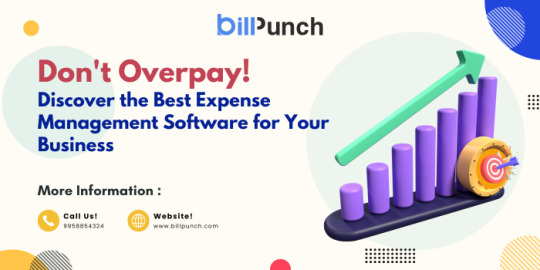
Why Do You Need Expense Management Software ?
If your business is growing, so is the complexity related to your receipts, travel expenses, reimbursements, and even the company spending by the team. It's tedious to manually enclose this information into spreadsheets; in addition, the process is quite error-prone and delays occur.
That's where the best expense management software for small businesses comes in. It automates, keeps your finances sorted, and gives you a real-time view of where the money is going. Whether it is day-by-day purchases or your monthly bills or even employee reimbursements, a good tool can turn things around all the way.
Essential Features You Should Look For in Best Expense Management Software that Suits Small Businesses
1. Usability
You need software that is intuitive and user-friendly. It should also be feature-rich and seamless when it comes to onboarding. Often, small businesses do not have dedicated IT teams, qualified individuals or resources to be able to deploy specialized software easily by an expert.
2. Automated and Integrated
The best software in this regard should also go further by automating all areas related to income and expenses, including the accounting tools involved, banks, and by supplementing with HR platforms. Applicants should take onboard, for example, automated expense capture as a recurrence and categorization.
3. Customizable Reporting
Good detailed reports facilitate spending trend analysis. Customizable reports are a basic need, be it a small business expense report software for sharing with your accountant or receiving insights for budget optimization.
4. Travel and Absence Management
If the workforce is going to take trips on a company basis, invest in a good travel management system that would have a good module for absence management, hence making things simple from booking to reimbursement to leave approvals.
5. Performance and HR Integration
Household expenses management tools now provide those in-house HR management, performance management systems, and other HR-related utilities as extensions of usage. All the above has made it very convenient for both HR and finance.
Seeking the Best Digitalization Benefits
Changing from manual processes to the best software for tracking revenues and expenditures brings quite a few advantages:
for example, time savings in approvals and reimbursements, less paperwork and reduced administration, visibility into spending by the team and department; guarantee policy compliance and the elimination of fraud risks, and real-time improvements in budgeting.
Bringings along small business expense report software, and preparing clearwashed, very professional reports for investors, partners or accountants can be accomplished in just a few clicks.
Conclusion
The best expense management software for small business, look for one that will simplify workflows, save time, minimize the human error, and grow with you.
If that seems hard to get, though, BillPunch makes all these things—and more—affordable and very user-friendly. So if you're looking for the best in travel management software or absence management software, or wish to know the best income and expense-tracking software in one, BillPunch surely covers it.
Ready to Simplify Your Business Finances ?
Allow BillPunch to take the pain out of expense tracking; automate your financial workflows, integrate with your HR tools, and get real-time control of your business spend-all on one platform.
#hr management#hr software#hris system#911 abc#arcane#artists on tumblr#batman#cats of tumblr#cookie run kingdom#elon musk
2 notes
·
View notes
Text

Finding the Right HR Software for Your Business
#hr software#hr management software#hr management system#hr payroll software#software#services#development
4 notes
·
View notes
Text
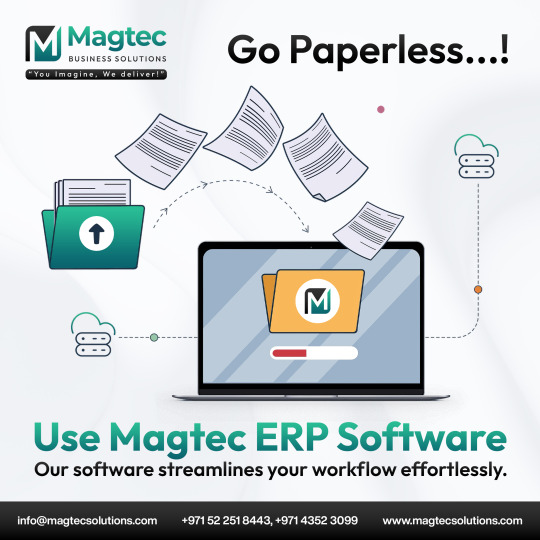
Tired of paper piles? 🚫 Go paperless with Magtec ERP Software! 💻 Streamline your workflow and boost efficiency. It's time to embrace the digital future.
#erp#business#software#management#automation#enterprise#resources#planning#solution#system#cloud#industry#finance#accounting#supplychain#inventory#crm#hr#manufacturing#distribution#retail#healthcare#education#hospitality#smallbusiness#mediumenterprise#largeenterprise#magtecerp#magtec#magtecsolutions
3 notes
·
View notes
Text
Applicant Tracking System Market in 2025: Stats You Must Know
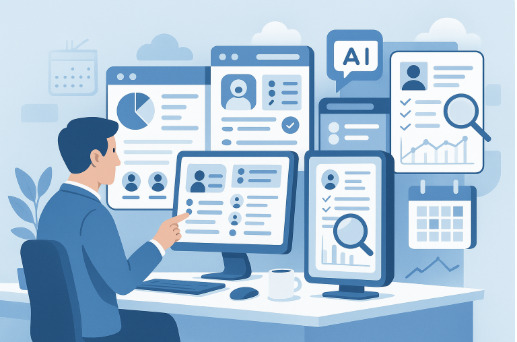
If you've ever been on the hiring side of the table, you already know the chaos that can come from managing job applications manually. Sorting through hundreds of resumes, juggling interview schedules, trying to keep notes organized—it’s enough to make anyone wish for a better system. Enter: the applicant tracking system.
Now, in 2025, these tools aren’t just for Fortune 500 companies. They’ve become a go-to solution for startups, mid-sized businesses, and recruiting firms alike. But with all the buzz around ATS platforms, what’s really going on in the market? What’s changed this year? And how should you think about using one (or upgrading what you already have)?
Let’s take a look.
The Market Has Grown—Fast
To put it plainly, applicant tracking systems are in high demand. The global market is now estimated to be worth about $3.2 billion. That number has been rising steadily over the last few years, driven by one very simple reality: hiring isn’t getting easier.
Remote work has gone mainstream. Job seekers are applying across time zones. Companies are moving faster and competing harder. And in all of that, recruiters need systems that help them keep up.
Even industries that were traditionally slow to adopt tech—like construction, education, and healthcare—are jumping onboard. They’re realizing that an ATS doesn’t just make hiring easier. It also makes it fairer, faster, and more scalable.
What Businesses Want in an ATS (And What They Actually Use)
So, what are companies really looking for in an applicant tracking system in 2025? It’s not the same checklist from five years ago.
Ease of use is now a top priority. If it takes weeks to train a new recruiter on your platform, that’s a problem.
Integration matters more than ever. Your ATS should talk to your HRIS, payroll provider, and even Slack or Teams.
Reporting and analytics are no longer “nice to have.” Teams want real-time dashboards that show who’s applying, where bottlenecks are happening, and how long it takes to fill roles.
DEI tools are becoming a standard feature. Blind resume review, diverse sourcing options, and compliance-friendly reporting are essential for many companies.
Another thing to note? AI is everywhere—but people are more thoughtful about how they use it. Recruiters want help with resume screening, sure. But they also want transparency. No one wants to reject a great candidate just because a machine didn’t like a keyword.
A Few Numbers Worth Knowing
Roughly 90% of large businesses (1,000+ employees) use an ATS.
Mid-sized companies? Around 70%.
Small businesses (under 100 employees) are catching up fast, with over 45% using an ATS in some form.
66% of hiring managers say their ATS reduced time-to-hire by at least a week.
52% report increased candidate satisfaction with automated communications.
61% say they’ve made more data-driven hiring decisions thanks to their ATS.
How ATS Tools Are Changing the Way We Hire
There’s a quiet revolution happening behind the scenes of recruiting. And it’s largely powered by the humble ATS.
In the past, recruiting was often reactive. You posted a job, waited for resumes, crossed your fingers, and hoped for the best. Now, with a solid applicant tracking system in place, recruiting has become proactive.
Recruiters can build talent pipelines. They can re-engage past candidates automatically. They can benchmark their own processes—and adjust them in real time. And most importantly, they can do all of that while staying organized and compliant.
Top ATS Platforms Leading in 2025
HRWeb Software – Clean UI, strong integrations, and onboarding support.
Greenhouse – Excellent for structured hiring workflows and collaboration.
Lever – Offers CRM capabilities alongside applicant tracking.
JazzHR – Budget-friendly and well-suited for small teams.
Workday – Enterprise-level functionality for large organizations.
What’s Next?
Looking ahead, expect more personalization in ATS platforms: predictive analytics to flag drop-offs, chatbots that respond contextually, and smarter sourcing features.
Mobile-first access and multilingual UX are also growing priorities as global hiring expands.
Final Thought: Don’t Get Left Behind
The applicant tracking system you choose today isn’t just another software—it’s your competitive edge. If your hiring process feels outdated or inefficient, it’s time to reassess your tools.
The teams that hire fast, hire smart—and they’re powered by ATS platforms that do more than track resumes.
0 notes
Text
Check Out our new video
FlexiEle HRMS Playbook- https://youtube.com/playlist?list=PLnmH4pI2roxgrqLL4eHv5XrGQuUx5LOmS&si=RDTpz9EfZOqrZGIb
User Guide - https://youtube.com/playlist?list=PLnmH4pI2roxgdGbFmp73jfsDMLXq2ZeFw&si=heu6fpitN8JAJrtK
#human resource management#hr technology#best hrms software companies in india#learning management system#performance#onboardingexcellence
1 note
·
View note
Text
Windson Payroll: The All-in-One Payroll Management Software for Growing Businesses
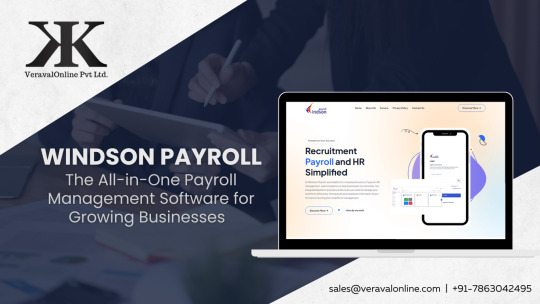
Managing people and payroll effectively is the heart of any successful organization. As businesses grow, so do the complexities of payroll processing, compliance management, and employee data handling. That’s where technology makes all the difference — and VeravalOnline Pvt Ltd is proud to offer a powerful solution with Windson Payroll, an advanced payroll management software built for today’s dynamic HR needs.
At VeravalOnline Pvt Ltd, we believe that effective Human Resource Management starts with accurate, timely, and compliant payroll. Over the last five years, we’ve worked hand-in-hand with HR teams, consultants, and businesses of all sizes — and one need has remained constant: a smart, reliable payroll management solution.
That’s why we built Windson Payroll — a complete, cloud-based HR payroll software that streamlines every aspect of the employee lifecycle, from onboarding to full and final settlement.
The Problem with Traditional Payroll
Manual payroll methods are prone to mistakes, delays, and compliance risks. For growing teams, spreadsheets and outdated tools just don’t cut it. Businesses need a solution that’s fast, compliant, and scalable — and that’s exactly what Windson Payroll offers.
Meet Windson Payroll – The Best Payroll Software in India
Windson Payroll is more than just a salary calculator. It’s a powerful and intuitive solution built to simplify HR operations and improve employee satisfaction.
Here’s what makes Windson Payroll stand out:
✅ Automated Salary Processing No more manual calculations. Windson handles salary structures, deductions, taxes, and payslips with ease.
✅ Statutory Compliance Made Easy
Keep up with ever-changing labor laws. Windson ensures your payroll is always compliant with the latest regulations.
✅ Streamlined Recruitment & Onboarding
Integrated recruitment tools help HR teams attract, evaluate, and onboard talent quickly and efficiently.
✅ Performance Tracking & Employee Management
Track performance metrics, set goals, and maintain a positive workplace culture — all in one place
✅ Scalable for All Sizes
Whether you're a small HR consultancy or a large enterprise, Windson adapts to your operational needs.
Why Businesses Trust Windson Payroll
Designed with real business needs in mind, Windson Payroll was shaped by feedback from HR professionals and business owners. It’s fast, secure, easy to use, and eliminates the chaos of month-end salary runs. It’s no surprise that Windson is gaining popularity as the best payroll management software in India.
Boost Efficiency with Payroll Automation
By choosing payroll automation for businesses, you can free up valuable time, reduce human error, and maintain employee trust — all while staying 100% compliant.
Ready to Experience the Future of Payroll?
If your HR team is juggling Excel sheets or using outdated tools, now’s the time to level up. Discover how Windson Payroll can transform your workflow with smart, secure, and seamless payroll processing.
👉 Get Started with Windson Payroll Today: https://www.veravalonline.com/human-resources-recruitment-and-payroll-management-hrpm/
VeravalOnline Pvt Ltd – Digital solutions made for growing businesses. Choose Windson Payroll — your trusted partner in HR automation.
#Payroll Management Software#HR Payroll Software#Best Payroll Software in India#Payroll Automation for Businesses#Payroll Processing Tool#Online Payroll System#Easy Payroll Software
0 notes
Text
HRMS Explained: What Is a Human Resource Management System?
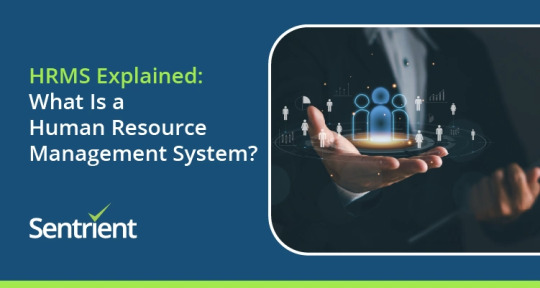
Remember when HR departments were drowning in paperwork, filing cabinets, and endless spreadsheets? Those days are rapidly becoming history as businesses embrace digital transformation.
Today’s workforce management challenges are more complex than ever. Remote work, compliance requirements, employee expectations, and data-driven decision making have fundamentally changed how organisations manage their people.
Whether you’re a small business in Sydney, a mid-sized manufacturer in Melbourne, or a large organisation across Australia and New Zealand, understanding Human Resource Management Systems (HRMS) isn’t just helpful – it’s essential for staying competitive.
This comprehensive guide will demystify HRMS technology, explore its core capabilities, and help you understand how modern HR software like Sentrient’s integrated platform can transform your people management processes from reactive administration to strategic workforce planning.
What Is a HRMS? – Complete Definition and Context
A Human Resource Management System (HRMS) is a comprehensive digital platform that automates, streamlines, and integrates all core HR functions within a single system. Think of it as your organisation’s digital command centre for managing every aspect of the employee lifecycle.
HRMS technology combines multiple HR functions – from recruitment and onboarding to performance management and compliance tracking into one cohesive platform. This integration eliminates data silos, reduces manual processes, and provides real-time insights into your workforce.
You might also encounter terms like HRIS (Human Resources Information System) and HCM (Human Capital Management). While these terms are often used interchangeably, HRMS typically refers to the broader operational platform, whilst HRIS focuses more on data management and HCM emphasises strategic talent development.
The key distinction between HRMS and traditional Human Resource Management (HRM) lies in the technology component. HRM refers to the strategic approach and processes of managing people, whilst HRMS is the digital platform that enables and enhances these processes.
Modern HRMS platforms like Sentrient’s solution go beyond basic HR functions, integrating compliance management, GRC capabilities, and learning management systems to provide a truly comprehensive workforce management ecosystem.
Brief History and Evolution of HRMS
The journey of HRMS began in the 1970s with basic payroll automation systems that replaced manual calculations and cheque writing processes.
The 1990s and 2000s brought internet connectivity and early cloud computing, enabling more sophisticated features like employee self-service portals and basic reporting capabilities.
Today’s HRMS platforms leverage artificial intelligence, advanced analytics, and mobile-first design to provide predictive insights, automated workflows, and seamless user experiences that would have been unimaginable just a decade ago.
Who Uses HRMS? – Stakeholder Breakdown
1. HR Professionals and Managers use HRMS as their primary workspace for managing employee data, processing workflows, generating reports, and ensuring compliance with employment legislation across Australian states and territories.
2. Employees interact with HRMS through self-service portals to update personal information, submit leave requests, access training materials, and participate in performance reviews without needing HR intervention.
3. Recruiters leverage HRMS for managing talent pipelines, tracking applicant progress, coordinating interviews, and onboarding new hires seamlessly.
4. Executive Leadership relies on HRMS analytics and reporting for strategic workforce planning, budget allocation, compliance monitoring, and measuring the ROI of HR initiatives.
Conclusion
HRMS technology has evolved from basic payroll automation to sophisticated platforms that drive strategic business value through improved efficiency, compliance management, and data-driven decision making.
The modern workplace demands more than traditional HR administration. Organisations need integrated solutions that handle complex compliance requirements, support remote workforce management, and provide actionable insights for strategic planning.
Whether you’re looking to replace outdated systems, improve compliance management, or enhance employee experience, the right HRMS platform can transform your organisation’s approach to people management.
Ready to discover how Sentrient’s HRMS solution can streamline your HR operations and improve compliance management? Book a personalised demonstration today and see the difference an integrated platform can make for your organisation.
This given blog was originally published here: What Is a Human Resource Management System?
#sentrient#compliance management system#hr management system#compliance system#compliance management#manual handling training course#performance management#performance management system#grc software#grc compliance software
0 notes
Text
8 Best OKR Software for Startups in United States (2025)
Startups thrive on ambition, agility, and focus. But as teams grow and priorities shift, keeping everyone aligned can be a real challenge. That’s where the best OKR software for startups comes in—helping founders and teams set clear objectives, track key results, and drive measurable outcomes.
Choosing the right OKR platform isn’t just about ticking boxes. It’s about building a culture of transparency, accountability, and rapid growth. Whether you’re a five-person team or scaling to fifty, the best OKR software for startups ensures everyone moves in the same direction, making every effort count.
The 8 Best OKR Software for Startups in 2025
1. Worxmate.ai – AI Powered OKR Software for Startups
Worxmate stands out as the best OKR software for startups in US thanks to its AI-powered planning, real-time tracking, and seamless integrations. Designed for ambitious teams, Worxmate makes it effortless to set actionable objectives, align cross-functional teams, and monitor progress—all in one intuitive platform.
Key Features:
AI-driven OKR planning and execution
Clear, actionable objectives and goal alignment
Real-time progress tracking and reporting
Organization-wide visibility and accountability
Integrations with leading tools (Slack, Teams, etc.)
Why Startups Love Worxmate:
Boosts engagement and productivity
Scales with your team’s growth
Empowers data-driven decision-making
Simple onboarding and user-friendly interface
Worxmate is trusted by leading organizations for its reliability, intelligence, and ability to drive sustainable success.
2. Profit.co
Profit.co offers flexible OKR management suitable for startups and enterprises alike. Its intuitive dashboards and customizable templates make OKR adoption smooth for new teams.
Best For: Versatile OKR management for all company sizes Notable Features: Customizable OKR cycles, performance analytics, integrations
3. Monday.com
Monday.com is a popular work management tool with robust OKR capabilities. Its visual boards and automation features help startups stay on top of goals and projects.
Best For: Real-time updates and collaboration Notable Features: Visual dashboards, team collaboration, integrations
4. ClickUp
ClickUp combines project management and OKR tracking in one platform. Startups appreciate its flexibility and all-in-one approach.
Best For: Startups needing both project and OKR management Notable Features: Custom views, goal tracking, automation
5. Weekdone
Weekdone specializes in OKR tracking for small and medium-sized businesses. Its simple interface and reporting make it ideal for startups new to OKRs.
Best For: Simplicity and ease of use Notable Features: Weekly check-ins, progress reports, feedback tools
6. Betterworks
Betterworks bridges strategy and performance, making it a strong choice for startups focused on growth and employee development.
Best For: Strategy alignment and performance management Notable Features: Continuous performance feedback, analytics
7. Quantive (Soon to be Workboard)
Quantive, transitioning to Workboard, offers powerful OKR tracking with advanced analytics and seamless integrations. Its upcoming rebrand promises even more robust features for startups focused on data-driven goal management. Best For: Startups seeking advanced analytics and future-ready OKR management Notable Features: Customizable OKRs, deep analytics, upcoming enhanced collaboration tools
8. Leapsome
Leapsome merges employee engagement with OKR management, ideal for startups looking to build a strong culture alongside high performance.
Best For: Culture and performance-driven startups Notable Features: Engagement surveys, learning modules, OKR tracking
How to Choose the Best OKR Software for Your Startup
When evaluating OKR tools, consider:
Ease of use: Is the platform intuitive for all team members?
Customization: Can you tailor OKRs to your unique workflows?
Integration: Does it connect with your existing tools (Slack, Jira, etc.)?
Reporting: Are insights and analytics actionable?
Scalability: Will it grow with your team?
Worxmate excels in all these areas, making it the best OKR software for startups ready to scale with confidence.
Conclusion:
Worxmate delivers everything a startup needs to set, track, and achieve ambitious goals—AI-powered planning, real-time tracking, seamless integrations, and actionable insights. By aligning teams and simplifying OKR management, Worxmate empowers startups to scale faster, stay focused, and build a culture of success. All Links
#productivity#performance management tools#okr#performance management software#performance management system#okr software#objective and key result#objective key result#performance management#HR#business#CEO
0 notes
Text
Advantages of Payroll Management Software







#payroll management software india#payroll management software#best payroll software in uae#payroll processing software in uae#hr solution#Best HRMS software#HR and payroll management system#hrms software#hr system software#best hr management software#HR software for small businesses#Cloud-based HR software#hr software for onboarding#best hr onboarding software#leave management software#leave management system
0 notes
Text
Cybersecurity Challenges in HR Data Management
In today’s digital age, HR Data Management departments increasingly rely on electronic systems to manage sensitive employee information, from personal identification data to payroll details and performance records. While this digital transformation offers numerous efficiencies, it also introduces significant cybersecurity challenges that organizations must address to protect their data and maintain trust.

The Growing Importance of HR Data Security
HR data is particularly sensitive because it contains personally identifiable information (PII), financial data, health records, and confidential employment details. Unauthorized access or data breaches can lead to identity theft, financial fraud, legal liabilities, and reputational damage for organizations. As cyber threats evolve in sophistication, HR departments must be vigilant in safeguarding this information.
Key Cybersecurity Challenges in HR Data Management
1. Data Breaches and Unauthorized Access
HR databases are prime targets for cybercriminals due to the wealth of valuable information stored within them. Hackers often exploit vulnerabilities in HR management systems, especially when these systems are connected to other enterprise applications, to gain unauthorized access.
2. Phishing and Social Engineering Attacks
HR personnel are frequently targeted through phishing campaigns that aim to trick employees into revealing login credentials or installing malicious software. These attacks can compromise HR systems and lead to data exfiltration.
3. Inadequate Security Protocols
Many organizations lack robust security protocols or fail to regularly update their systems. Outdated software, weak passwords, and insufficient access controls increase the risk of cyber intrusions.
4. Remote Work Vulnerabilities
The rise of remote work has expanded the attack surface. Employees accessing HR systems from unsecured networks or personal devices can inadvertently introduce security vulnerabilities.
5. Compliance and Data Privacy Regulations
Regulations such as GDPR, HIPAA, and CCPA mandate strict data privacy standards. Failing to comply can lead to hefty fines and legal consequences, making cybersecurity an essential aspect of HR data management.
Strategies to Address Cybersecurity Challenges
Implement Strong Authentication and Access Controls: Use multi-factor authentication and role-based access to limit data access to authorized personnel only.
Regular Software Updates and Patching: Keep HR systems and related software up to date to fix vulnerabilities.
Employee Training and Awareness: Educate HR staff and employees about phishing, social engineering, and safe data handling practices.
Data Encryption: Encrypt sensitive data both in transit and at rest to prevent unauthorized reading if data is compromised.
Develop Incident Response Plans: Prepare protocols for detecting, responding to, and recovering from security breaches.
Compliance Monitoring: Regularly audit HR data management practices to ensure adherence to relevant data privacy laws and standards.
Conclusion
As HR departments handle some of the most sensitive organizational data, their cybersecurity practices are critical to safeguarding employee privacy and organizational integrity. Addressing these cybersecurity challenges requires a comprehensive approach that combines technology, policies, and employee awareness. By prioritizing security, organizations can protect their HR data from evolving cyber threats and build a resilient, trustworthy workforce management system.
0 notes
Text
Accent Consulting Payroll Software is the ideal choice for businesses seeking accuracy, speed, and user-friendliness in Delhi NCR. It offers features like automated salary processing, statutory compliance, and an employee self-service portal. Our Payroll Software is customizable to suit any business size or need, streamlining HR processes for greater efficiency and simplicity.
#hr management software#payroll software#payroll management system#leave and attendance management system#employee performance management#e-recruitment management system#appraisal management system#hrms#payroll outsourcing services#payroll software in noida#payroll software in delhi ncr
0 notes
Text
#attendance management software#crm software#hrms software#payroll#software#employee timesheet software#hrms management#payroll management system#payroll management company#payroll management services#payroll management software#workforce management#hrms solutions#hrms systems#hrms payroll software#hr software#hr services#hr management
0 notes
Text
HR Software: A Practical Solution for Today’s Work Challenges.

The Changing Face of HR
A few years ago, most small to mid-sized companies handled HR tasks manually — spreadsheets for attendance, folders for employee records, emails for leave requests. It worked… until it didn’t.
As businesses grow and teams expand, handling everything by hand becomes a slow, confusing, and error-prone process. That’s exactly why more companies are turning to HR software in India.
What Is the True Function of HR Software?
Fundamentally, HR software is a tool that keeps businesses organised. It records things such as: Who’s joined recently
Who’s on leave
When salaries are due
What documents are pending
How employees are performing
Instead of jumping between different systems or chasing down paperwork, everything is in one place — neat, clean, and accessible.
Why It Actually Makes a Difference
Less Time Wasted Nobody wants to spend hours updating Excel sheets or digging through email threads just to find one piece of information. HR software takes care of repetitive tasks like attendance, leave approvals, and payroll automatically.
Fewer Mistakes Whether it’s calculating salaries or tracking leave balances, doing things manually invites errors. With HR software, the risk drops. Everything’s calculated and stored with accuracy, and nothing gets forgotten.
Employees Stay in the Loop Modern HR tools usually come with self-service options. So if someone wants to check how many leaves they’ve taken or download last month’s payslip, they don’t need to email HR — they can do it themselves, anytime.
It Grows With You As the team gets bigger, HR tasks multiply. What worked for 10 people won’t work for 50. A good HR system grows with your business, keeping things running smoothly as you scale.
Is It Worth the Investment?
Absolutely. Think of all the hours saved every month. Think of the frustration avoided, the clarity gained, and the trust built with employees who see that their information is handled properly.
Even for small companies, the cost of not having an organized HR system adds up — in time, stress, and missed opportunities.
Final Thoughts
HR software system isn’t about replacing people. It’s about helping the HR team focus on what really matters: people, not paperwork. It brings structure without getting in the way and makes the workday a little smoother for everyone.
If your business is growing — or even just aiming to be more organized — it might be time to make the switch.
0 notes
Text
Simplify Workflows with Claim Management Software
Managing employee claims manually can be frustrating and time-consuming, especially for growing businesses. From travel reimbursements to medical bills and other employee expenses, each claim must be verified, approved, and processed efficiently. That’s why forward-thinking organizations are switching to automated solutions like Qandle’s Claim Management Software.
What Is Claim Management Software?
Claim Management Software is a digital tool designed to streamline the entire process of submitting, reviewing, and approving employee expense claims. It helps HR and finance teams ensure policy compliance, reduce paperwork, and speed up reimbursement cycles.
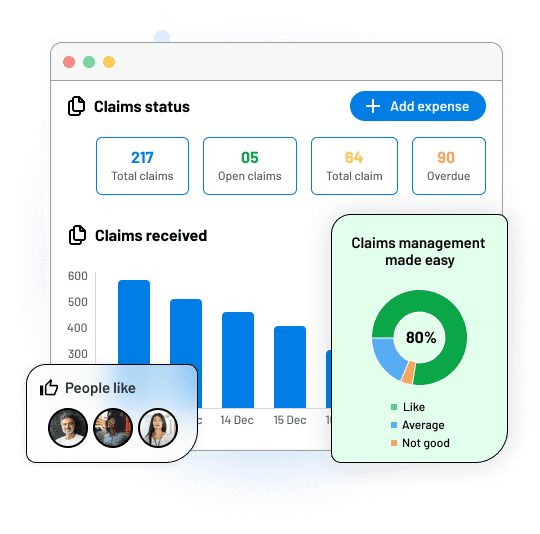
Qandle’s Claims Management System simplifies complex workflows and ensures that claims are processed faster, with minimal manual intervention. Whether it’s a recurring expense or a one-time reimbursement, Qandle takes care of it all under one easy-to-use platform.
Why Choose Qandle's Claims Management System?
Qandle offers a robust and intuitive Claims Management System that can be customized to meet your organization’s unique policies. With Qandle, the entire process—from submission to final approval—is automated, transparent, and user-friendly.
Key Features Include:
Automated Claim Submissions Employees can submit claims through a web or mobile app by simply uploading receipts and entering relevant details.
Multi-Level Approval Workflows Route claims through predefined approval chains to ensure accountability and compliance.
Real-Time Tracking Both employees and approvers can track the claim status in real-time, avoiding repeated follow-ups.
Policy Enforcement Qandle automatically validates claims against company policies to prevent out-of-policy expenses.
Integrated Payouts The system integrates with payroll for seamless reimbursement of approved claims.
Benefits of Using Claim Management Software
The advantages of implementing Qandle’s Claim Management Software go far beyond automation.
● Saves Time and Effort
Manual claim handling is inefficient. Qandle drastically reduces processing time by automating routine tasks.
● Enhances Accuracy
Reduce errors in claim entries and approvals with system-based validation and checks.
● Boosts Employee Satisfaction
Timely reimbursements and transparent processes lead to happier, more engaged employees.
● Ensures Compliance
Automated policy enforcement means fewer disputes and full audit readiness.
Ideal for All Business Sizes
Whether you're a startup with a handful of employees or a large enterprise managing hundreds of claims each month, Qandle’s Claims Management System is designed to scale. You can set up rules for different departments, roles, and expense types, making the software adaptable and powerful.
Conclusion
In a world where efficiency and accuracy matter more than ever, relying on outdated, manual claim processes is a risk. Qandle’s Claim Management Software offers a comprehensive and streamlined solution that benefits both the HR team and employees.
Say goodbye to spreadsheets and hello to smart claim processing.
Explore Qandle’s Claims Management System today and take the first step towards a more efficient workplace! Visit Qandle to learn more or request a demo.
0 notes
Text

Effortless payroll processing is here! 💡
Our Payroll Management Software ensures accuracy, compliance, and employee satisfaction—all in one place.
✨ Key features:
Timely payroll
Self-service portals
Tax compliance simplified
Custom reports
📲 Book your demo today! Link in bio.
#PayrollSoftware #BusinessTools #HR
#payrollsoftware#starlink payroll software#business payroll software#employee management system#hr solution
1 note
·
View note
Text
The Importance of an Efficient Leave Management System in the Workplace

Managing employee leave might appear straightforward on the surface, but anyone who has worked in HR knows how easily things can spiral out of control. This is where a good leave management system is important. It is not just about noting who is in and who is out of the office — it’s about finding the right balance between employee happiness and the productivity of the business.
A good leave system will promote transparency. When employees know where they stand in terms of how many days off that they are entitled to, what types of leave are available, and how to apply for them, it limits confusion and save back-and-forth. A good leave system will also allow managers to make decisions based on knowledge rather than having to guess about who is available to do the work.
From the company standpoint, tracking leave properly equally helps to avoid the last-minute surprises; when critical people are suddenly missing in action because they happened to plan overlapping vacations that they did not mark in your leave system, the project and deadlines may be at risk. The system needs to allow managers to plan in advance so that everyone’s workload can be managed more equitably and business can continue to run effectively.
Having a system in place for employee leave will also protect the company from a compliance standpoint. There are very specific labour laws by region about time-off, whether paid vacation, paid sick leave, or parental leave. Tracking all of these activities makes the ability to remain compliant simple and you don’t run the risk of lose the business license because someone got bored sitting around and complaining when they are technically able to take time off.
Ultimately, a leave management system isn’t just an HR tool — it’s part of building a respectful and efficient work culture. When leave is managed well, employees feel valued and businesses can operate with clarity and confidence.
0 notes